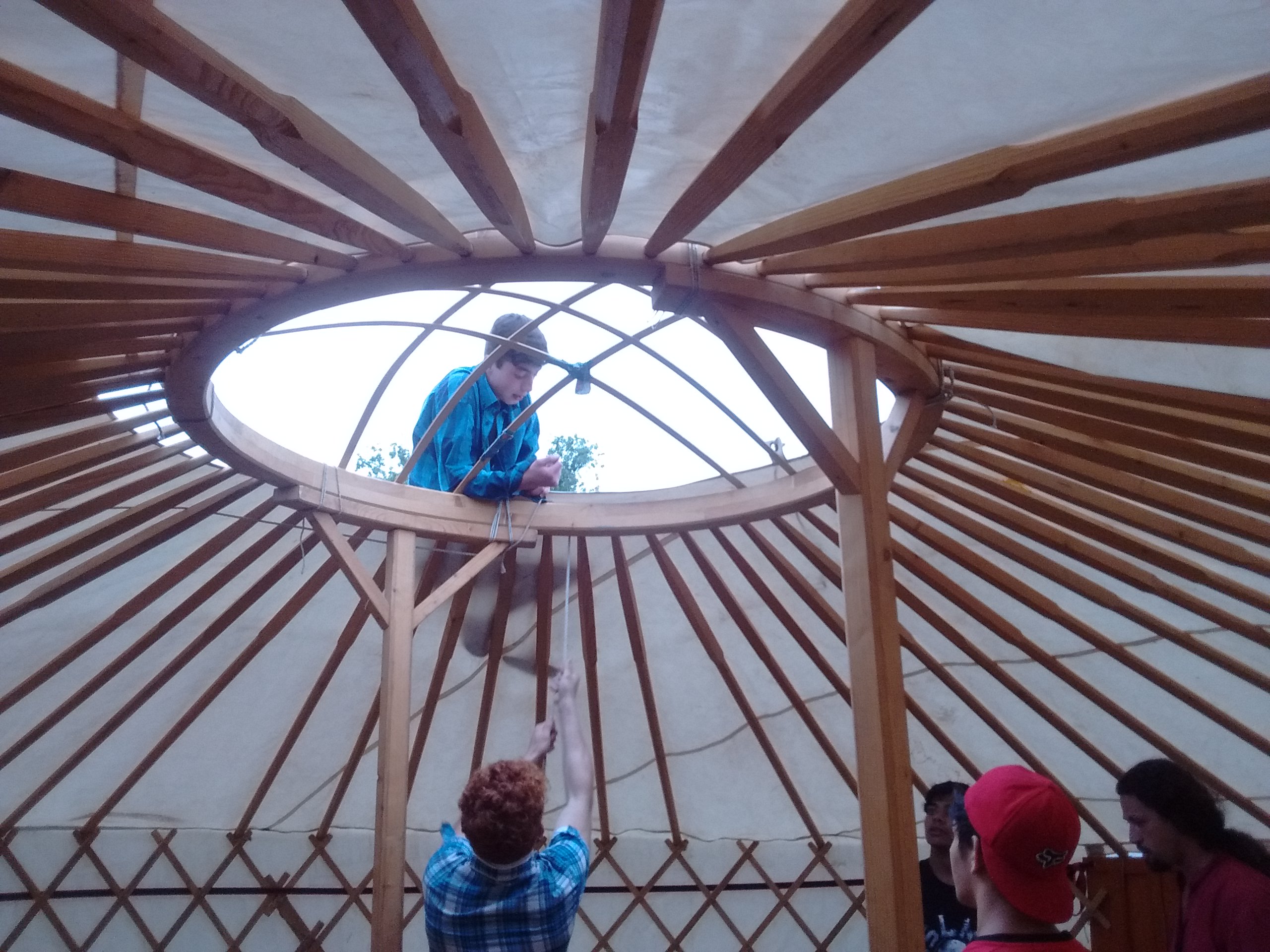What is a Jurta
A jurta (“yurt” in English) is a big nomadic tent that was most prominently used by Eastern European and Asian nomad people. It is still in use in some countries, like Mongolia, for example.
A jurta consists of many single pieces that have been designed with the special purpose in mind to be build up and down again in as short a time as possible and being easily transportable. The complete setting up of a jurta takes about two hours.
Jurtas from different regions are slightly different from each other, too. If you know what to look for you can spot the area of origin from their looks only. The walls of Hungarian jurtas are either straigt or slighly turned inside, for example, while the walls from a Kazakhstani jurta are slightly arched outside.
The different pieces of a jurta
Kerege is the fence wall, which is the framework for the jurta’s wall. It usually consists of seven telescopic wooden lattices, whose ends and starting points are tied together with the lélek kötél. The door is between the first and the last lattice. The fence wall gets additional stabilisation from the iz, the soul-rope, tied around it, so the kerege doesn’t lose it’s form even over a longer period of time.
Tündök is the round opening for the roof in the center of the jurta. It has an diametre of about 1.50 m and is held up and in position by the two istenfa (“god-tree”) - massive wooden pillars with supporting braces on their upper end. They are placed left and right if looked at it from the door.
The tündök has indentations on it’s outer side where the tips of the tetőléc, or, in plural, tetőlécek, are put into. A tetőléc is the name of the wooden poles the roof structure is made of. The other end of the tetőlécek are placed on top of the kerege and tied to it.
Ajtó, the door, always looks East with a single-standing jurta. If there is a group of jurtas build up together - like from a whole tribe setting up camp - only the jurta of the leader faces East. The other ones build their jurtas up in a circle, the door facing the fireplace in the middle of the camp. The rank of the different members of the tribe is demonstrated like this, too - the closer a jurta is to the one of the leader, the higher is the standing of it’s owner in the tribe itself.
After the structure is build up, it gets covered by the ponyva, also called vászon, the cover. Traditionally, this cover is two-layered. The inside is made of furs for isolation, the outside by a waterproof fabric to make the jurta safe against rain, too. By now you can also get single-layer covers that are both wind- and rainproof and sufficiently isolating. The tündök gets covered by a square piece of cover, which makes it easy to open it for airing.
The jurta gets reinforced by one or two other ropes (kötél) on the outside and is then ready to be furnished. And there is a lot that fits into such a jurta: beds, cupboards, wardrobes, a wood-burning stove and seating arrangements. Jurtas are really roomy and delightfully well tempered. You don’t really want to spend your summer days inside of them, but they are great in the night, and with the stove you can also spend a comfortable winter inside of them - Sebastian and Zsofi still sleep in theirs every now and then, even with temperatures below the freezing point.
camp_evs · culture_evs · architecture_evs